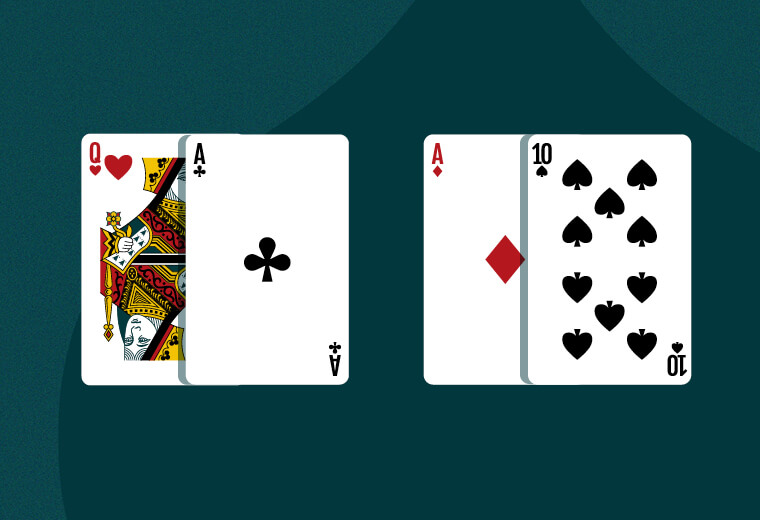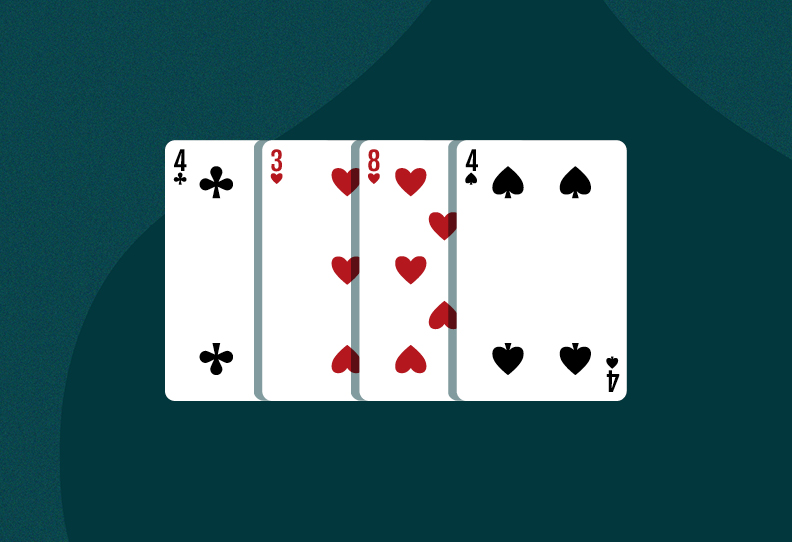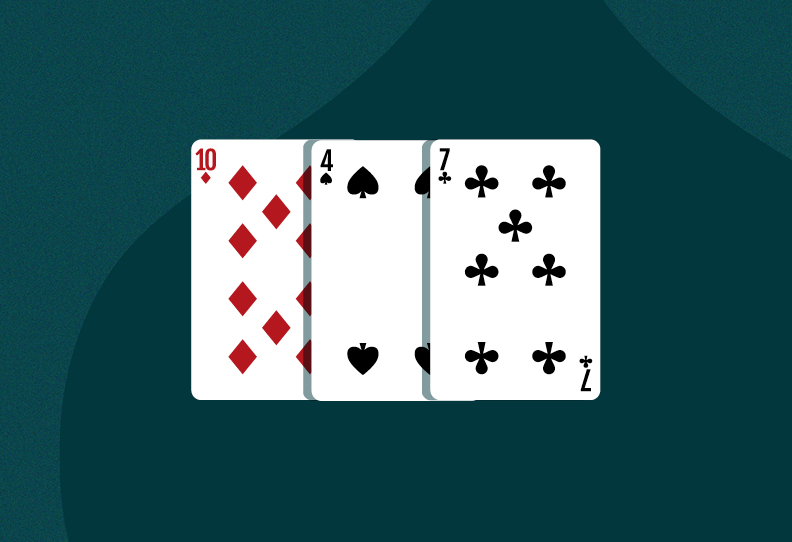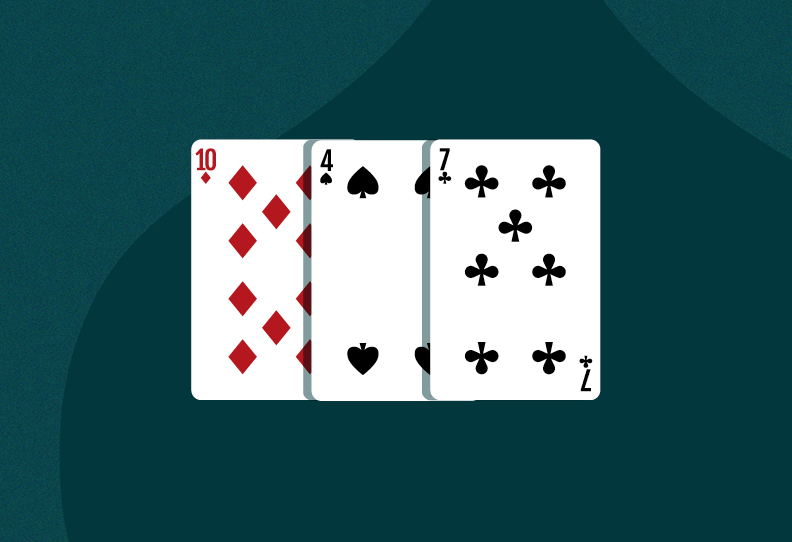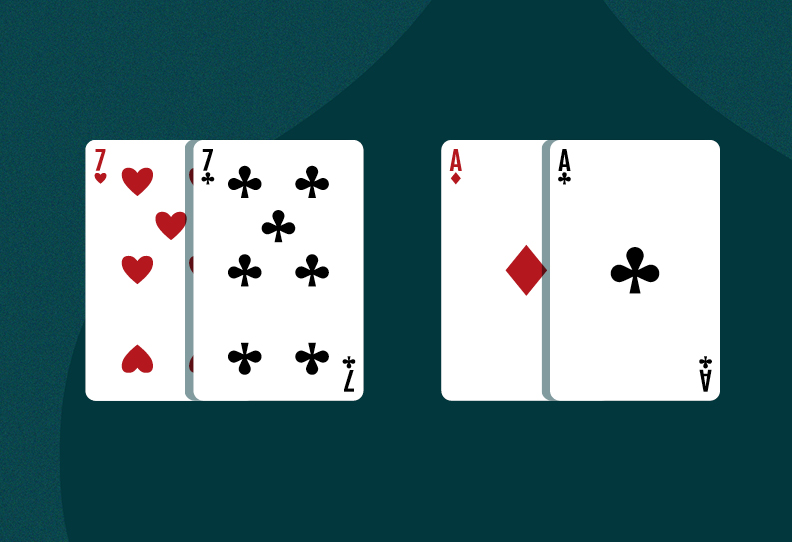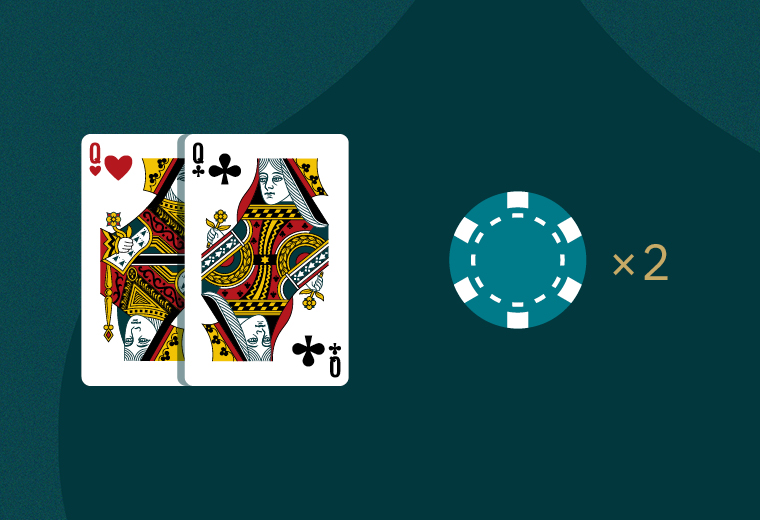Blackjack
Blackjack’s roots trace back to the Middle Ages, but this exciting card game has never been as popular as it is today. Its appeal lies not only in its simple rules but also in its fair chances of winning. Your opponent in Blackjack is the dealer, and your goal is to achieve a higher score than the dealer. However, if your score exceeds 21 points, you lose. Ideally, the two cards you receive at the start of the game will total exactly 21 points. This is called “Blackjack”—a rare occurrence. More often, you’ll find yourself in situations where strategy is required. Should you take another card? And another? But be careful: don’t go over 21!
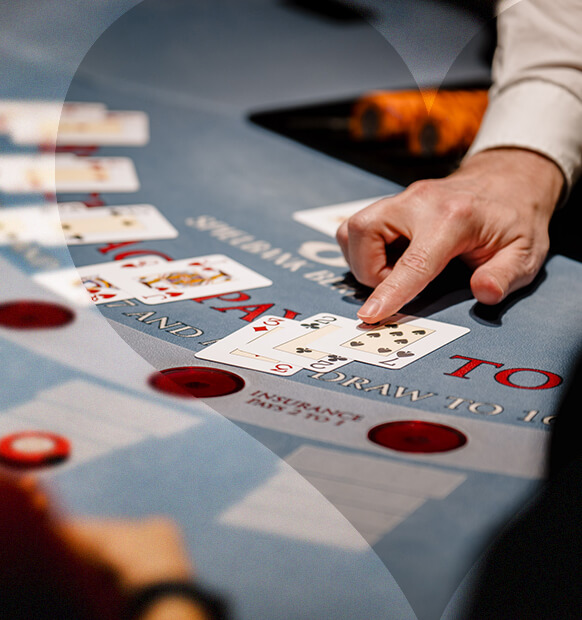
Get closer to 21 than the dealer.
Objective
The goal is to beat the dealer. You win if your score is higher than the dealer’s without exceeding 21 points. Cards numbered 2 through 10 have their face value. Face cards (Jack, Queen, King) count as 10 points each, and an Ace can count as either 1 or 11 points.
Gameplay
After all players have placed their bets, the dealer deals the cards face-up: first one card per box, then one card for the dealer, followed by a second card for each box. If no player has Blackjack (a combination of an Ace and a 10 or an Ace and a face card), players can request additional cards to increase their score. Finally, the dealer draws additional cards for their hand until they reach at least 17 points. At “17,” the dealer must stop drawing cards. Players aim to reach “21” gradually.
- “Hit”: Request another card from the dealer.
- “Stand”: Indicate that you do not want any more cards.
Video game instructions
Step by Step
Locations with Blackjack
Level
Easy to learn.
If you have never played blackjack before, we recommend that you get a brief introduction from our Guest Relations staff on site.
Bets
At our Potsdamer Platz location, the minimum bet at the table is €4.00, and the maximum is €1,000.00.
Payout
In blackjack, the average payout ratio is 94.3%; of course, this depends on the way the game is played.
FAQs / Glossary
In our blackjack glossary, you will find all the important terms and technical words listed and simply explained.
| Hit/Stand | With the command “Hit,” the player requests another card. This command is also often referred to as “Draw.” “Stand,” on the other hand, is exactly the opposite. With the command “Stand,” you decline another card and no further cards are dealt to you. The active play is over for the player who chooses “Stand.” |
| Split | A move where identical-value starting cards are divided into two separate hands requiring an extra bet for each hand. |
| Double Down | A strategic move where players double their wager after receiving their initial two cards but are dealt only one more card. |
| Push/Tie | Occurs when both player and dealer hands have identical scores; no money is won or lost. |
| Bust | When a hand exceeds 21 points; results in an automatic loss regardless of what happens to other players or the dealer. |
| BlackJack | The best possible hand consisting of an Ace and a face card or a 10; wins automatically unless tied with another Blackjack. |
| First Base | The position directly to the left of the dealer; this player receives their cards first. |
| Last Base | The position directly to the right of the dealer; this player receives their cards last before the dealer acts. |
| Stiff | A "Stiff Hand" has a value between 12 and 16—risky because drawing another card could result in a bust. A "Stiff Card" refers to a dealer's upcard valued between 2 and 6; its outcome depends on subsequent draws. |
| Card Values | Cards numbered 2–10: Face value. Face cards (Jack, Queen, King): 10 points each. Ace: Counts as either 1 or 11 points |
